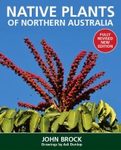![Medicinal Plants of Mauritius and of the World Medicinal Plants of Mauritius and of the World]()
Click to have a closer look
About this book
Customer reviews
Biography
Related titles
Recommended titles
About this book
Throughout the ages, human beings have relied on Nature for their basic needs and, not the least, medicines. Plants have formed the basis of sophisticated traditional meddecine systems that have been in existence for thousands of years and continue to provide mankind with new remedies. The advent of synthetic medecines after the Sencond World War has to some extent marginalized their importance. Nontheless, the interest in Nature as a source of potential chemotherapeutic agents continues. This is by virtue of the fact that natural products and their derivatives represent more than 50% of all drugs in clinical use in the world. Higher plants contribute no less than 25% of the total.
Mauritius, like so many other tropical countries, has a unique flora and a rich pharmacopeia. The latter, unfortunately, is not well known and is under-utilesed by the general public. This traditional knowledge, which also forms part of our cultural heritage, is gradually disappearing. The present publication brings together data on the therapeutic potential of different types of plants: aromatic, ornamental plants, dye-bearing plants, spices amongst others. 175 medicinal Plants, illustrated with 241 colour photograph are reported here.
Medicinal Plants of Mauritius and of the World of each plant regroups the following information: botanical and vernacular names, the origin and distribution, the different plant parts used, the traditional uses, indications, active ingredients, pharmacology, potential side effects that may arise upon using these plants. The introductory part of this text provides a broad picture of the history of medicinal plants and their contribution to modern medicine to date.
Customer Reviews
Biography
Ameenah Gurib-Fakim, PhD is presently the Managing Director of the Centre for Phytotherapy Research (CEPHYR). She has authored several books on Medicinal Plants and on the flora of Mauritius and Africa. In 2010, she also co-authored the African Herbal Pharmacopoeia.
Elected Fellow to the African, lslamic Academies of Science and the Linnean Society of London, she has received several international scientific prizes namely the l'Oreal-Unesco Prize for Women in Science (2007), the Special “Woman Professionals in Science” Prize of the CTA/NEPAD/RU FORUM/AG RA/ATPS/FARA (2009); the African Union ‘Woman in Science‘ Prize (2009). In 2013, she received the Honorary Doctorate from the Universite Pierre Marie Curie (Sorbonne Universites).











![Plantes Médicinales de Maurice et d'Ailleurs [Medicinal Plants of Mauritius and of the World] Plantes Médicinales de Maurice et d'Ailleurs [Medicinal Plants of Mauritius and of the World]](http://mediacdn.nhbs.com/jackets/jackets_resizer/21/216157.jpg)















